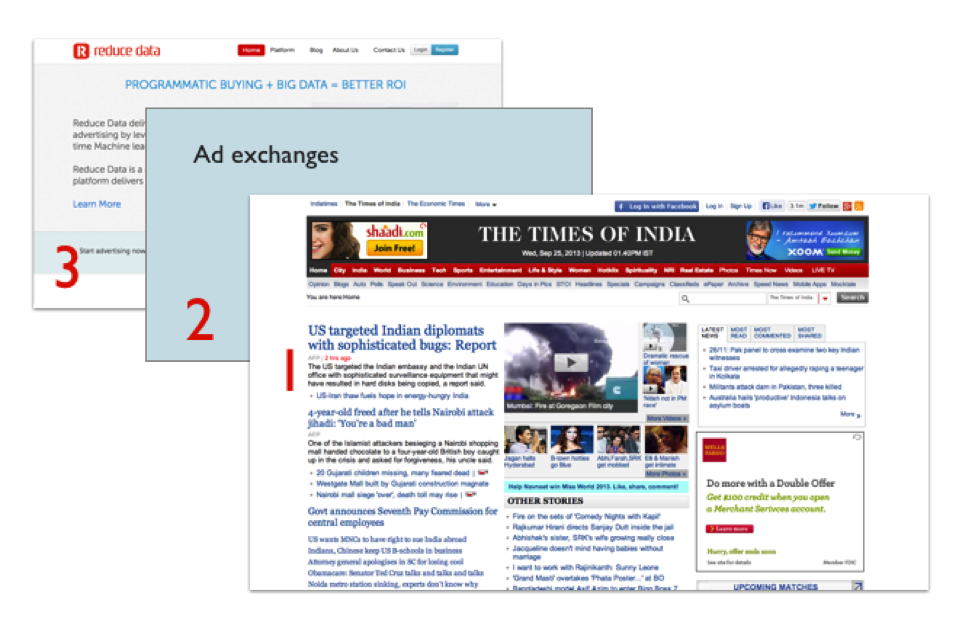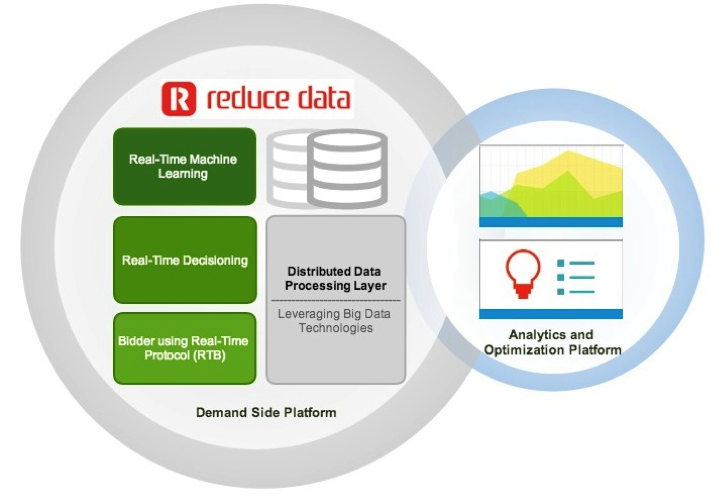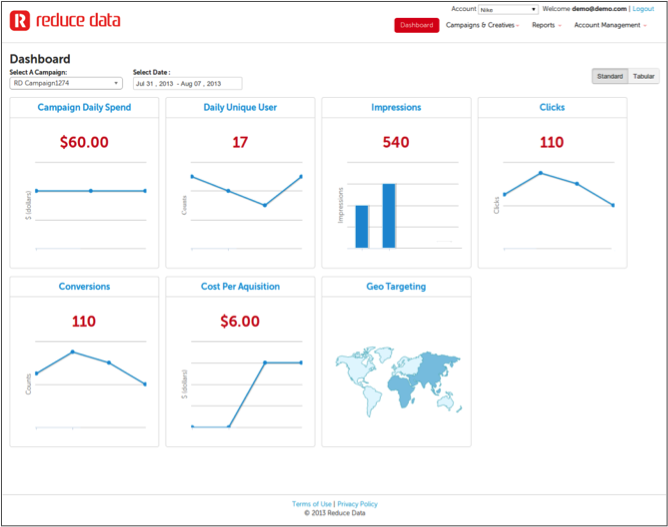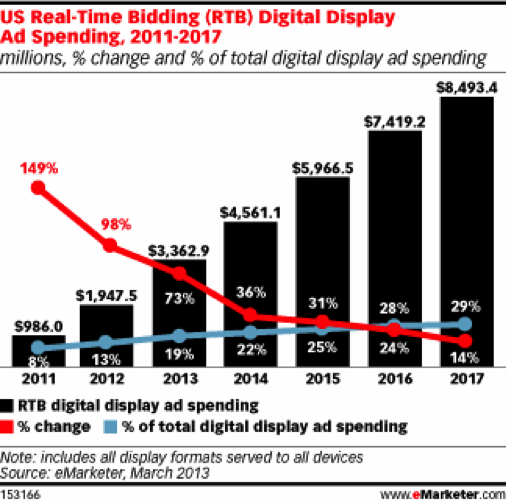Reduce Data is a programmatic advertising platform. Reduce Data helps advertisers buy media efficiently using programmatic means – machine learning, real-time data driven optimization and real-time bidding. Asif Ali is the founder of Reduce Data.Asif has over 15 years of technology experience. He previously ran ZestADZ, a mobile ad network (acquired by Komli in 2011). ZestADZ was a global mobile ad network with presence and advertisers in over 25 countries. Before that, Asif was the CTO / Co-founder of a wireless and enterprise startup – Threesixty Technologies Sdn Bhd, in Kuala Lumpur, Malaysia. ThreeSixty maintained app stores on Carriers, built and rolled out mobile commerce solutions such as prepaid SMS topup solutions and had the top 2 telcos – Maxis, Celcom, Top banks – Public bank and Ministry of Education, Malaysia as its customers. The current team strength I s about 15 with 4 people in US, rest of the team is in India. The team is roughly 40% sales, 40% engineering and 20% operations.
The Company
Reduce Data is an early-stage company offering a programmatic advertising platform. They pivoted recently from being an analytics-focused company to a company that offers an integrated platform for media buying and analytics.
Asif says the idea came about in his last ad network, where he found advertisers unable to effectively measure and optimize ad campaigns across various networks. The scale and size of data that was being generated in advertising was huge and there were very few platforms addressing this scale to drive efficiencies. It is also estimated that nearly 30% of media spends are wasted. Reduce Data was started as an attempt to solve this problem.
Reduce Data is what is called as a Display Advertising Platform. Display Advertising Platforms typically focus on Banner Advertising as opposed to delivering text ads within search results (like the way Google does) – see understanding display advertising for a simple view of the display advertising platform and marketplace.
Any company that needs to buy advertising typically buys media from various platforms (this varies, depending upon their goals). Display advertising is one such kind of platform where media can be bought.
Let’s say if Flipkart wants to buy media to promote its new tablets-only store.
- They will sign up with Reduce Data
- Either through self-service or with the help of Reduce Data’s team, they will identify and select the right target audience and segment of traffic (for example – Male / Females, aged 25 and above in urban centers only and those who are available within a list of top 10 cities)
- Assuming that such audience information is available, Reduce Data’s team will make that available and kick start the campaign.
When a user visits a web page
- The publisher (like Times of India) auto requests the ad exchange for an ad
- Ad exchange will in turn send this request to Reduce Data and various other buyers to ask them whether they want to buy the user.
- Reduce Data, will check whether it has relevant information about the user.
- Reduce Data’s machine learning algorithms predict whether the user can be bought and if so at what price.
- Assuming that Reduce Data wants to buy the user on Flipkart’s behalf and assuming that this user belongs to the right target audience that Flipkart wants, it will bid and either win or lose the auction.
- On a win in the auction, the Flipkart ad is shown to the user.
This automated auction called Real-time Bidding (RTB). This entire process 1,2 and 3 happens in 1/10th of a second.
The Product
Reduce Data provides the best of programmatic and a measurement platform in a single platform to its customers (advertisers and ad agencies). The programmatic ad platform allows them to display ads for their clients on a large number of publishers’ sites, and for the most targeted set of audiences. The measurement platform allows their clients to analyze the impact of their campaigns and make the most efficient utilization of their ad budget. Such an integrated platform allows them to offer a low-cost, integrated solution to its customers.
Some of the features of the platform are:
- Programmatic Buying capabilities: Reduce Data is focussed on delivering ROI by leveraging superior programmatic approaches.
- Measurement and Programmatic in a single Platform: Advertisers using Reduce Data can leverage Reduce Data’s analytics to measure advertising spends through the same platform they use to purchase ad space.
- Rich Media and Video Campaigns: Reduce Data allows video campaigns to be run in addition to other media-rich ad campaigns such as MRAID-compatible (a mobile rich media standard) HTML5 mobile campaigns.
- Web and Mobile Advertising: Allows brand advertisers to reach both web and mobile users using a single platform.
- Retargeting: Re-targeting enables advertisers to follow the user after a visit to a website. This approach generally enables better conversions and improves ROI for the advertisers.
- Audience Segmentation: Reduce Data has partnership with three data providers to enable delivery of highly segmented audiences (available currently for US and UK, more international data providers are being added).
- Self Service Console: Reduce Data enables self-service advertising through an easy-to-use, self-service user interface to manage the campaigns and check its effectiveness.
Technology
Core of Reduce Data is a technology platform that participates in Real-Time Bidding as a Demand Side Platform(DSP). Given the fact that the real-time bidding protocol is run across these players for every visit to a site, the turnaround time from a DSP has very stringent requirements. Typically, an Ad exchange expects the response from a DSP within 100 milliseconds; including network latency (turnaround time includes time taken to process the bid request, and time taken for the message to travel from exchange to DSP and back). Hence there are 2 technology challenges they need to solve:
- Low response time: The time taken to process the bid request by Reduce Data software has to be very small. Reduce Data currently can process a request in 4-6 milliseconds.
- Low network latency: The time taken for roundtrip between Ad Exchange server and Reduce Data server. Hence the location of the servers matter. They have tried to use Amazon Cloud, but aren’t happy with the costs and latencies, and are deploying datacenter infrastructure close to the supply side partners and exchanges.
Differentiators
This is a highly competitive market and many of the features they offer are standard features offered by lots of players. A few features that differentiate them from rest of their competition are:
- Measurement Tools: Reduce Data provides an integrated platform which very few players offer. However, integrated doesn’t mean reduced set of features –Reduce Data offers full blown real-time reporting that enables advertisers to effectively measure and optimize their ad spends without having to use a third party platform.
- Superior programmatic technology + big data driven optimization
- Real-time machine learning systems with various algorithms for various needs
- Big data technology driven real-time data processing / analysis capability which is extensively used in the feedback loop to drive highly optimized ad spends
Market
According to EMarketer’s latest forecast, RTB (Real-time bidding, the programmatic advertising) portion of digital display ad spending is steadily increasing, from 8% in 2011 to 19% in 2013, and projected to be around 29% in 2017 – $8.49 billion – a huge opportunity.
Reduce Data has a dedicated Sales team, and even though they have launched very recently, they see 15-16 leads a week, and all their current clients are paying ones. They expect to reach $2-3M revenue within next 12 months.
Building Credibility
They need to build credibility in the market that is filled with competition. To ensure that brand gets built quickly, Asif has moved to US, and is focused on marketing Reduce Data. Through tech meetups, publishing whitepapers, speaking engagements, getting published in print media, and of course by delivering good value to his clients, he hopes to build Reduce Data into a credible player in this space.
India offering
They recently launched an India offering too. This is a smart move from them because this helps them to position themselves as a big player in this space which has presence in multiple countries. India being an important market, some exchanges like Facebook Ad Exchange, tend to give preference to companies that have India presence when they let DSPs connect.
Future releases of their platform are likely to focus extensively on improving algorithmic and data processing capabilities.
Competitive Landscape
This is a highly competitive market. There are a large number of very well-known DSP in the market: Adroll, Dataxu, Mediamath, Turn, Google (InviteMedia), AppNexus, Komli Media, etc. Since all of them connect to same Ad exchanges (and hence have the same access to ad inventory) and offer similar functionality, it is hard to distinguish between them. Competition is based on pricing and ease-of-use. Such a crowded space with little differentiation will mean that prices will be squeezed and this will impact new players like Reduce Data.
If we do try, we can see 2 areas of competitive differentiation (other than pricing, of course!):
- Inventory access: Though all DSPs aim to connect to all Ad Exchanges, some have better access than others. For example, Facebook hasn’t allowed all DSPs to come on their Exchange, and so it might disadvantage a few DSPs. Similarly, some publishers (too specialized, localized, etc.) may be available only some specialized exchange, and not all DSPs may be connected to them.
- Effectiveness of data-based decisions: DSPs use data to make the decision about which impression to bid on. Decisions depend on proprietary algorithms, data available about the user and processing power, and this distinguishes different DSPs.
As the space evolves, vertical integration is a possibility – DSPs getting acquired by (or acquire) upstream or downstream players. Such a consolidation is more imminent as RTB grows at a rapid pace and become critical to display advertising.
The Road Ahead
Display Advertising is undergoing significant changes over last few years, with technology creating never-before opportunities for innovation as well as disruption. Demand-Side Platforms have the potential to make media buying and campaign management extremely effective and provide significant ROI to the advertisers. Reduce Data is in a very competitive space with large and well-known competitors. This industry will evolve along 3 dimensions:
- Data-driven decisions: One of the promises of DSP is to offer compelling value using deep data analysis. Reduce Data needs to continue to focus on its machine learning and big-data capabilities.
- Tools: Brand safety, Measurement, ROI calculators, more variety of algorithms etc. are keys to interest brand marketers to switch to new platforms and Reduce Data will continue to innovate and rollout various tools as per the needs of the marketplace.
- Media focus – DSPs tend to focus either on Video, Online or Mobile and that is going to continue for a while. Reduce Data will eventually need to choose a sweet spot for itself in one media.
One of the things going for Reduce Data is the credentials of its founder: Asif has deep experience in the advertising space from his prior company (which he sold to Komli). Another is the fact that they are an engineering driven organization and are focussed evolving the platform faster than the incumbents in the marketplace.
If they execute well on these dimensions and leverage their technology focus and industry connect, they have a real good chance of becoming a force in this fast-evolving space and carve out a name for themselves.






